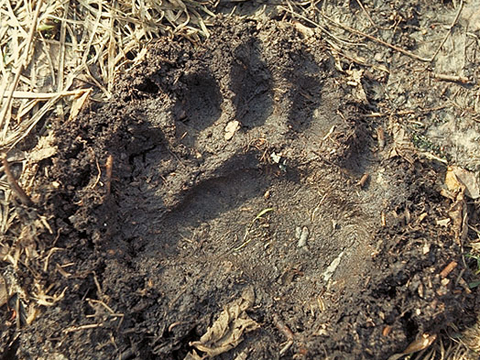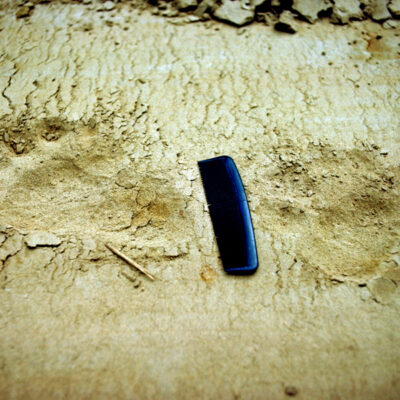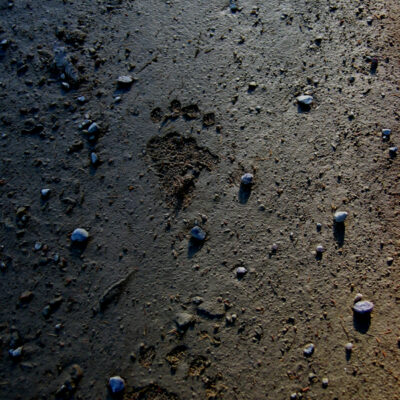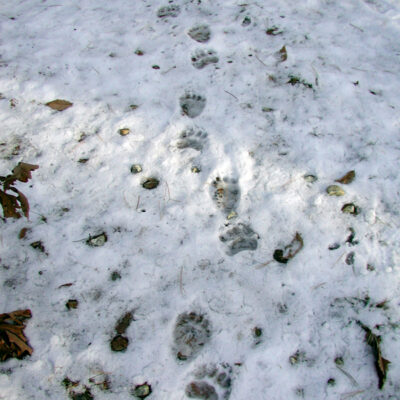

Bear Tracks and Trails
Bears walk on the soles of their soft feet, so they often do not leave distinct tracks unless they walk through soft mud or snow.

Black bear paw
Bears have 5 toes on each foot. Their large toe is on the outside of the foot and the small inner toe does not always register.
Footpads are bigger at the outer edges. Front tracks are wider than rear tracks. The small round heel pad of the front foot seldom registers. The rear track is longer because the whole foot, including the heel, registers. They tend to toe-in, especially with their front feet.
Often bears travel in an over-step walk, with their rear foot falling in front of where the front foot fell. Where the back foot falls only slightly in front of the front foot, there is a double track, which has led to outlandish reports of track sizes. In deep snow, bears direct-register by placing their rear foot in the same hole created by the front foot.
Bears often follow deer trails and forest roads, but some trails are used mainly by bears. These consist of a series of depressions created by multiple bears placing their feet in the same footsteps year after year.
Bear trails can be seen where bears approach favorite marking trees. These trails are often especially distinctive because bears frequently stomp-walk as they approach such trees. Stomp-walking is a form of scent-marking in which bears stomp, twist, and slide each footstep.
Black Bear Tracks and Trails:














We are a 501(c)(3) non-profit that relies entirely on the support of visitors, merchandise sales and people like you. We do not receive any state or federal funding.
Help support our mission.
Donate Now